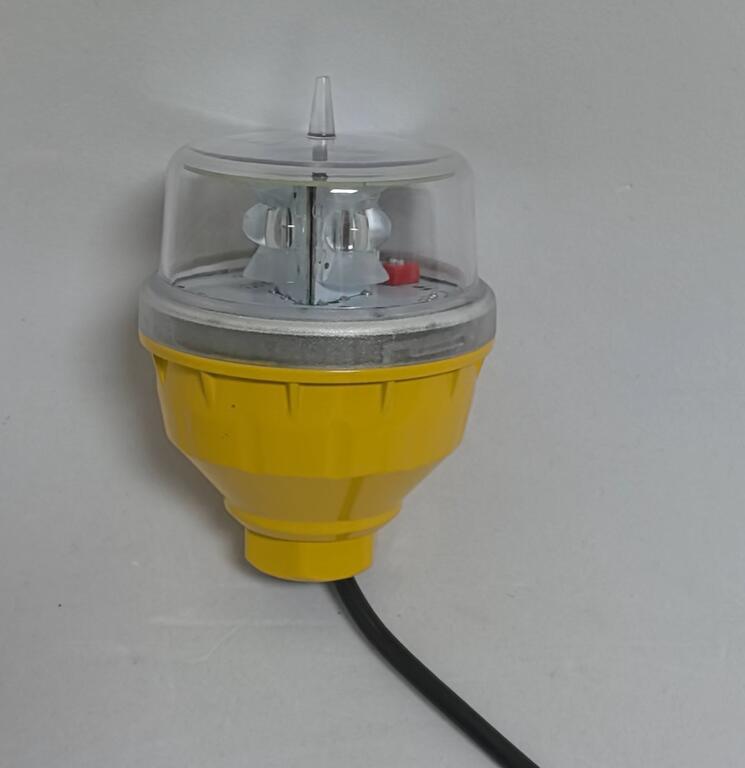Low Intensity Obstruction Light: The Essential Guide for Safe Aviation Marking
In the complex world of aviation safety, low intensity obstruction light systems play a fundamental role in preventing collisions between aircraft and ground-based structures. These specialized lighting solutions provide critical visual warnings for structures that don't require high-intensity lighting but still need to be clearly visible to pilots. This comprehensive guide examines the applications, technical specifications, regulatory requirements, and selection criteria for these essential safety devices.
Understanding Low Intensity Obstruction Lights
Low intensity obstruction light systems are designed for structures that:
Are less than 200 feet tall (varies by jurisdiction)

Are located outside critical flight paths
Require nighttime marking but don't need extreme visibility
These lights typically emit steady-burning red illumination, providing constant visual reference points for pilots during nighttime operations. Their relatively modest light output makes them energy-efficient while still fulfilling their critical safety function.
| Low Intensity Obstruction Light |
Key Applications and Use Cases
1. Urban Building Marking
Low-rise commercial buildings
Residential towers
Construction sites with temporary structures
2. Telecommunication Infrastructure
Cell towers under certain height thresholds
Radio antennas
| Low Intensity Obstruction Lights |
Microwave relay stations
3. Industrial Facilities
Factory chimneys
Storage tanks
Crane systems
4. Rural and Remote Structures
Windmills
Agricultural silos
Water towers
Technical Specifications and Features
Modern low intensity obstruction light systems offer several important characteristics:
LED Technology: Energy-efficient with long lifespan (50,000+ hours)
Steady-Burning Operation: Constant red light output
Weather Resistance: IP65 or higher protection against elements
Low Power Consumption: Typically 5-20W per unit
Modular Design: Easy installation and maintenance
Regulatory Compliance Standards
These lighting systems must comply with various aviation safety regulations:
FAA AC 70/7460-1L (U.S. standards)
ICAO Annex 14 (International standards)
CASA regulations (Australia)
EASA requirements (Europe)
Key compliance factors include:
Light intensity (typically 10-32 candelas)
Beam distribution patterns
Color chromaticity (specific red hue requirements)
Physical durability standards
Installation Best Practices
Proper installation ensures optimal performance:
Placement Strategy:
Topmost point of structure
Intermediate levels for very wide structures
Spacing based on structure dimensions
Mounting Considerations:
Secure, vibration-resistant fixtures
Proper grounding for electrical safety
Accessibility for maintenance
Wiring and Power:
Weatherproof conduit systems
Surge protection
Backup power options where critical
Maintenance and Inspection Protocols
Regular maintenance ensures continuous compliance:
Monthly Visual Checks: Confirm all lights are operational
Quarterly Cleaning: Remove dirt, debris, and insect nests
Annual Electrical Testing: Verify proper voltage and connections
Component Replacement: Proactive LED module replacement
Documentation: Maintain detailed service records
Selecting the Right Low Intensity Obstruction Light
Key selection criteria include:
Certification Status: Verify compliance with local regulations
Environmental Rating: Match to installation conditions
Power Options: AC, DC, or solar-powered versions
Mounting System: Compatibility with structure type
Manufacturer Reputation: Established safety product providers
Emerging Technologies and Future Trends
The low intensity obstruction light market is evolving with:
Smart Monitoring Systems: Remote status checking via IoT
Advanced Materials: More durable housings and lenses
Energy Harvesting: Improved solar collection efficiency
Integrated Designs: Combined with other safety systems
Low intensity obstruction light systems represent a critical component in aviation safety infrastructure, providing essential visual warnings for countless structures worldwide. By understanding their applications, technical requirements, and maintenance needs, facility operators can ensure both regulatory compliance and enhanced airspace safety.
When selecting these systems, prioritize quality, compliance, and reliability over initial cost considerations. A properly installed and maintained low intensity obstruction light installation contributes to safer skies while protecting your assets and reputation. As technology advances, these systems will continue to evolve, offering even greater efficiency and functionality for aviation safety applications.
